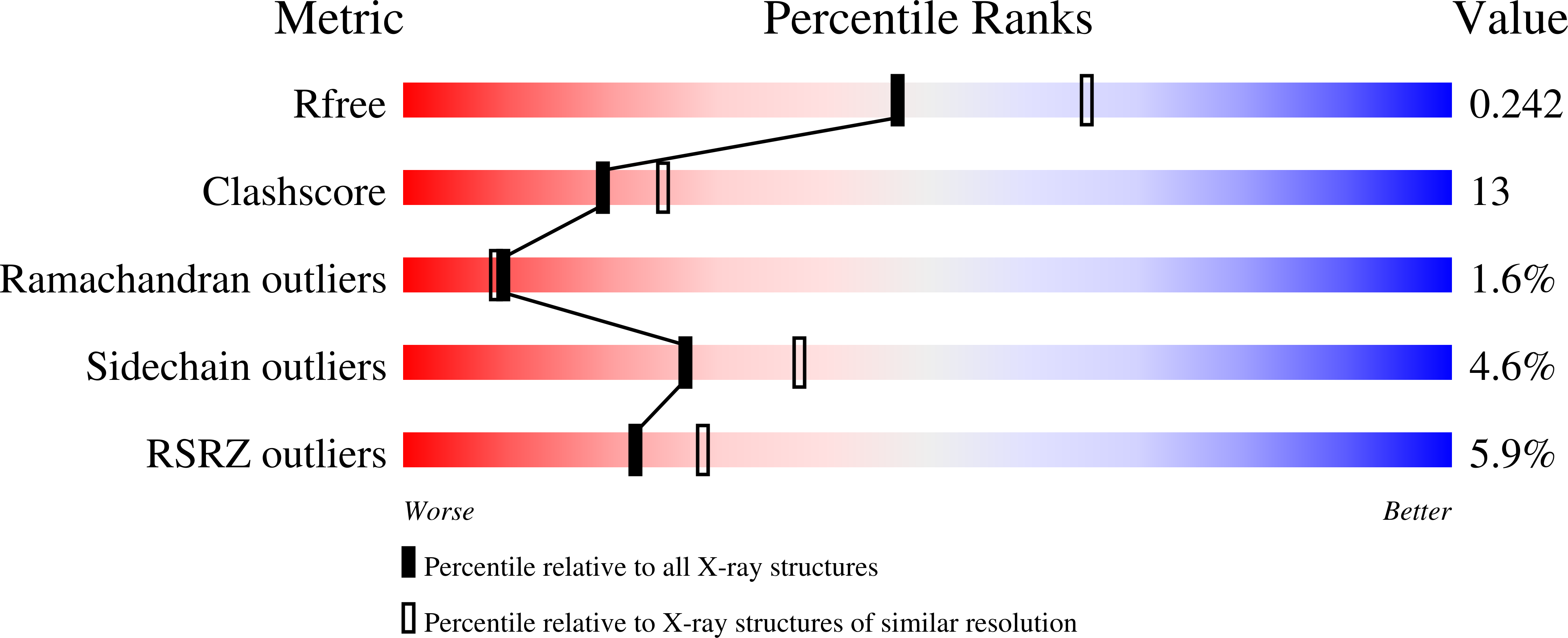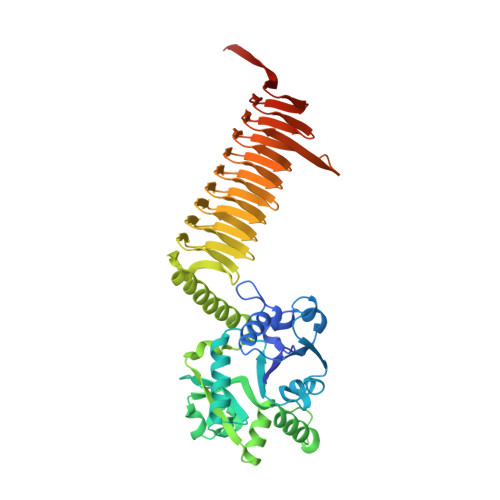Crystal structure of Streptococcus pneumoniae N-acetylglucosamine-1-phosphate uridyltransferase bound to acetyl-coenzyme A reveals a novel active site architecture.
Sulzenbacher, G., Gal, L., Peneff, C., Fassy, F., Bourne, Y.(2001) J Biol Chem 276: 11844-11851
- PubMed: 11118459
- DOI: https://doi.org/10.1074/jbc.M011225200
- Primary Citation of Related Structures:
1HM0, 1HM8, 1HM9 - PubMed Abstract:
The bifunctional bacterial enzyme N-acetyl-glucosamine-1-phosphate uridyltransferase (GlmU) catalyzes the two-step formation of UDP-GlcNAc, a fundamental precursor in bacterial cell wall biosynthesis. With the emergence of new resistance mechanisms against beta-lactam and glycopeptide antibiotics, the biosynthetic pathway of UDP-GlcNAc represents an attractive target for drug design of new antibacterial agents. The crystal structures of Streptococcus pneumoniae GlmU in unbound form, in complex with acetyl-coenzyme A (AcCoA) and in complex with both AcCoA and the end product UDP-GlcNAc, have been determined and refined to 2.3, 2.5, and 1.75 A, respectively. The S. pneumoniae GlmU molecule is organized in two separate domains connected via a long alpha-helical linker and associates as a trimer, with the 50-A-long left-handed beta-helix (LbetaH) C-terminal domains packed against each other in a parallel fashion and the C-terminal region extended far away from the LbetaH core and exchanged with the beta-helix from a neighboring subunit in the trimer. AcCoA binding induces the formation of a long and narrow tunnel, enclosed between two adjacent LbetaH domains and the interchanged C-terminal region of the third subunit, giving rise to an original active site architecture at the junction of three subunits.
Organizational Affiliation:
AFMB-UMR6098, 31 Chemin Joseph Aiguier, 13402 Marseille Cedex 20, France.















